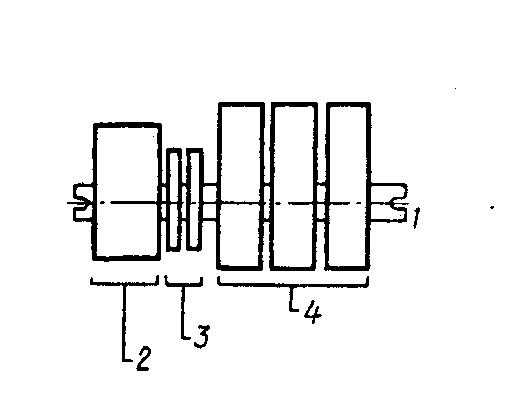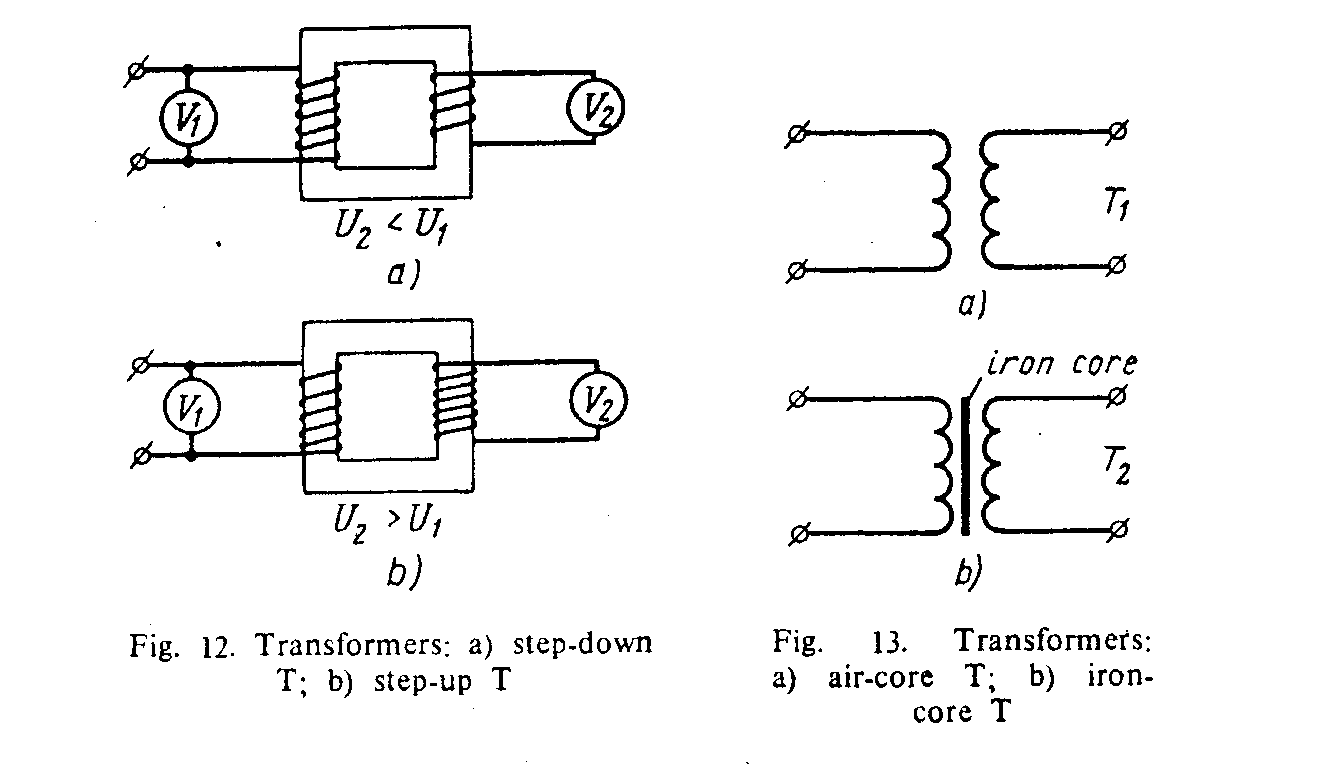ВУЗ: Не указан
Категория: Не указан
Дисциплина: Не указана
Добавлен: 10.04.2024
Просмотров: 216
Скачиваний: 0
ВНИМАНИЕ! Если данный файл нарушает Ваши авторские права, то обязательно сообщите нам.
2. Complete the sentences:
1. The internal circuit includes the energy source: as to … . 2. Switches belong to non-automatic devices; as to … . 3. The knife-switches can operate under abnormal conditions; as to … .
3. Answer the questions:
1. What does а switch serve for? 2. What is the resistance of the switch in the on- and in the off-position? 3. What elements does the external (internal) circuit consist of? 4. What devices belong to manually operated ones? 5. What do controllers serve for? 6. In what position should the devices be checked for faultless operation?
4. Render the extract in English. Demonstrate the operation of а switch while rendering:
Switches are commonly used to open and close circuits. Closed is the on-position; open is the off-position. The switch is in series with the voltage source and its load. In the on-position the closed switch has а very low resistance, which results in maximum current in the load with zero voltage loss across the switch. When the switch is off it has very high resistance and no current flows in the circuit.
5. Translate the text in writing. Use а dictionary:
Disconnecting switches
Application. Indoor disconnecting switches are devices that are intended to make and break electric circuits rated at 6 to 10 kV, a.c. with no load currents. The single-pole disconnecting switches are controlled manually, by means of an insulated rod. The triple-pole disconnecting switches are controlled by means of manual lever-type operating mechanisms.
Mounting Instructions. 1. Clean the switch from dust and dirt. 2. Inspect it on the outside. 3. When insulating the switch, see that the bolts and switch terminals are reliably protected.
 |
| Fig. 10 – Schematic positioning of the different contactor components: 1 - fixed bar; 2- magnetic circuit; 3- auxiliary contacts; 4 - poles |
6. Translate the article. Describe Fig. 10:
Contactors Туре 370
These contactors consist of the following main parts:
- one fixed bar;
- one magnetic circuit which may be either a.c. оr d.c.;
- one or more auxiliarly contacts (the maximum number of auxiliary contacts is 4);
- one or more poles for use with a.c. or d.c. loads.
These components are to be installed.
Their functions are as follows: fixed bar has the function of supporting all the stationary parts of the contactor. At both ends it is provided with
holes for mounting the contactor. Moving shaft is made of steel. It is insulated for the installation of both main pole and auxiliary moving contacts.
RELAYS
Relays are electromagnetic devices widely used in various branches of industry. Relays are designed for rather low currents and for operation in control circuits at low voltages.
Ву means of а relay electric current flowing in one circuit can open or close а second circuit and thus control the switching on and off of а circuit.
The main components of а relay are an electromagnet, an armature and а spring. As to contacts, they belong to its auxiliary elements. When а current starts flowing in the electromagnetic winding, the armature moves and the spring closes the contacts. When there is no current in the primary circuit, the spring pulls the armature and the contacts open.
 |
| Fig. 11 – Electromagnetic relay in operation |
Fig. 11 shows how а relay is used to control the work of an electric motor. The relay is placed close to the motor which is connected to its secondary circuit. The armature closes the contacts of the secondary circuit, and the motor starts operating. It stops when the relay opens.
The primary circuit is operated either manually or automatically. Every evening and morning street lights are switched on and off from the main panel by means of relays.
As to thermal relays, they use а bimetallic thermal elements. This element consists of two metals differing in thermal coefficients. When the element is heated it actuates the device. It can be heated either directly by the current flowing in it or indirectly by а heater.
1. Translate the sentences. Mind "no":
1. No heating element can actuate this device. 2. No auxiliary springs were utilized to pull the armature. 3. The switches are faultless; they produce no noise in operation. 4. The operators used no additional springs since no additional components were needed to actuate the relay.
2. Choose the correct variant:
1. Relays are designed for а) low currents. b) high currents.
2. А relay consists of а) а spring and an armature. b) an electromagnet, an armature and а spring.
3. The relay is placed а) close to the motor. b) far from the motor.
4. The motor is connected to а) the primary circuit. b) the secondary circuit.
5. Street lights are switched on and off а) by means
of relays. b) by means of controllers.
6. The bimetallic element is heated а) directly. b) indirectly. с) both directly and indirectly.
3. Answer the questions:
1. For what value of current are relays designed? 2. What main parts does а relay consist of? 3. То which circuit is the motor connected? 4. By what means are street lights switched on and off? 5. How is the bimetallic thermal element heated?
4. Translate the text in writing. Use а dictionary:
Magnetic Thermal Relay
Application. This relay is designed for the overload protection of motors connected to а single-phase or to а three-phase a.c. supply. The thermal unit matches the motor temperature and protects it against overloads.
Construction. The relay consists of two main parts: the magnetic unit and the contact box. The magnetic unit includes two coils on а horizontal shaft. А primary coil – for the current to be controlled and а secondary coil connected to а bimetallic bar. The parts of the relay are installed close to each other on а base of insulating material.
Operation. The current to be controlled flows through the primary coil and produces both а magnetic field and а current in the secondary coil. This current flows through the bimetallic bar and heats it. When the current increases above the maximum value, the bar warps. The contaet on the shaft is opened.
TRANSFORMER
А transformer is used to transfer energy; due to the transformer electric energy may be transferred at а high voltage and reduced at the point where it must be used to any value. Besides, а transformer is used to change the voltage and current value in а circuit.
А two-winding device consists of а closed core and two windings (coils). The primary winding is connected to the voltage source; it receives energy. The secondary winding is connected to the load resistance; it supplies energy to the load.
The value of voltage in the secondary winding depends on the number of turns in it. In case the secondary winding has more turns than the primary, the output voltage is greater than the input voltage. А device of this type steps up the voltage and is termed а step up transformer (see Fig. 12). In case the secondary winding has fewer turns than the primary, the output voltage is lower than the input. This device decreases or steps down the voltage. It is termed а step down transformer.
Let us compare Т1 and Т2. Т2 has an iron core: it is used for
low frequency currents. T1 has an air core and is used for high frequencies.
The core and the windings are placed in а metal tank. The tank contains the insulating oil, which protects the device from overheating and cools its parts. The higher is the capacity of the device the greater is the cooling required.
Each transformer has а nameplate attached to the tank. It bears the transformer's ratings, its type, its capacity, number of phases, group of winding, frequency, duty ratings, method of cooling, indoor or outdoor, mass, the name of the plant and some other data.
 |  |
| Fig. 12 – Transformers: a) step-down T b) step-up T | Fig. 13 – Transformers: a) air-core T b) iron-core T |
When the new transformer is installed its tank is earthed. After that the device is given а test to check its operation. During the test one should listen to its noise by means of а bakelite tube, 1 meter long. In the case of the abnormal noise or in the case of oil decrease in the tank, the device should be switched off and examined.
Common faults in а transformer are an open in the winding, а short between the primary and the secondary, and а short between turns. Shorted turns are due to periodic overloads or dynamic stress. An open may result from overheating. Stresses result from short circuit currents.
In case а transformer has а fault, it stops operating or its operation is poor. А faulty element should be eliminated and replaced by а new one.
The transformer forms one of the main parts of а substation.
1. Translate the following words:
winding, turn, input, output, tank, nameplate; poor; to transfer, to receive, to step up, to step down, to contain, to cool, to require, to attach
2. Translate the word-combinations in writing:
а) input voltage, voltage output, step up transformer, step down transformer, regular operation, poor results
b) modern network protection relay, high-voltage current transformer, faultlessly operating step up transformer, poorly operating step down transformer, external hard porcelain insulator
3. Fill in the verbs "to attach", "to contain", "to receive", "to supply", "to require":
1. Any operating transformer ... cooling; thus its tank ... cooling liquid. 2. The new apparatus is to be ... to the panel; this attachment is not simple.
It ... experience. 3. The Т windings ... and ... electric energy. 4. Any device ... testing.

